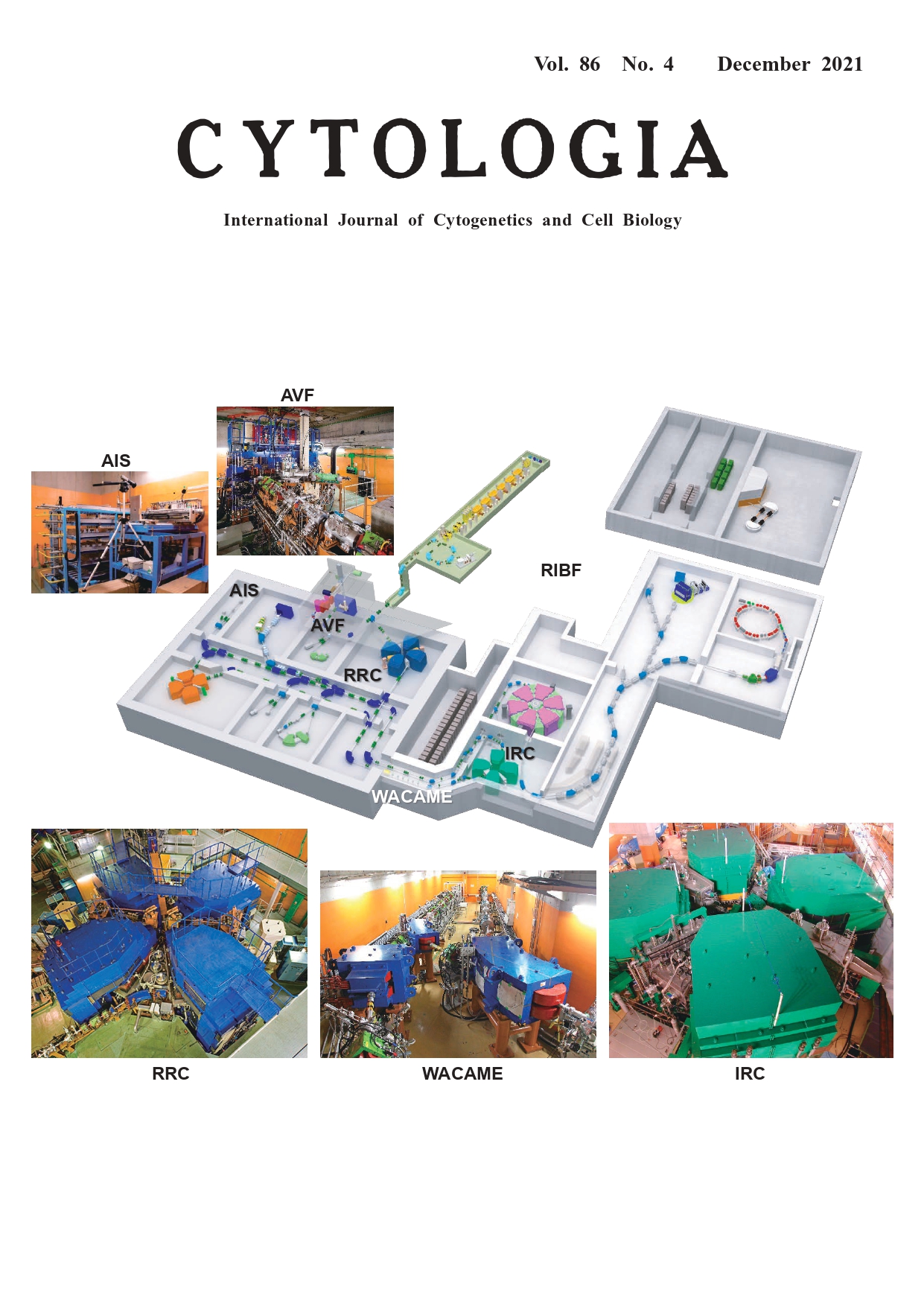| ON THE COVER |  |
||
|---|---|---|---|
| Vol. 86 No.4 December 2021 | |||
| Technical Note | |||
|
|
|||
Creation of Green Innovation and Functional Gene Analyses Using Heavy-Ion Beam Breeding Kotaro Ishii1,2, Shigeyuki Kawano3 and Tomoko Abe1* 1 RIKEN Nishina Center for Accelerator-Based Science, 2–1 Hirosawa, Wako, Saitama 351–0198, Japan 2 National Institute of Radiological Sciences, Quantum Life and Medical Science Directorate, National Institutes for Quantum Science and Technology, 4–9–1 Anagawa, Inage-ku, Chiba 263–8555, Japan 3 Functional Biotechnology PJ, Future Center Initiative, The University of Tokyo, Wakashiba, Kashiwa, Chiba 277–0871, Japan
The RIKEN RI Beam Factory (RIBF) is one of the largest facilities worldwide for heavy-ion acceleration. While nuclear physics is the primary field studied at RIBF and RIKEN is known for its nuclear physics laboratories, its activities cover every scientific and technological field, including biology and agriculture. We have developed a unique method for inducing mutations using heavy-ion beams from particle accelerators at RIBF, linking agricultural science and accelerator physics. Using this technology, we have marketed over 30 new cultivars in Japan, the United States, and the European Union since 2001 (Abe et al. 2015). The cover figure shows an overview of RIBF. We have been studying plant mutagenesis at RIBF since 1993 using C, N, Ne, Ar, and Fe ion beams accelerated through the AVF cyclotron and RIKEN ring cyclotron (RRC). We built a new beam line called the wide applicability to mutagenesis experiment (WACAME) in 2015, which enabled further acceleration using the intermediatestage ring cyclotron (IRC), increasing the nuclides with higher linear energy transfer (LET) and longer range. LET is the amount of energy given by an ionizing particle to the target per unit path length along its track. We have developed the automatic irradiation system (AIS) in 2004, which consist of an automatic sample changer and a range shifter. An ion beam is an excellent tool for mutation breeding to efficiently improve horticultural and agricultural crops. We have collaborated with flower companies, public agricultural experimental stations, and universities since 1996 to promote the use of heavy-ion beams and demonstrate their potential in practical breeding. Our efforts led to the generation of two new plant varieties from irradiated materials in 1998: new color Dahlia ‘World’ with large flowers, and sterile Verbena ‘Temari Coral Pink’ with prolonged flower lifespans. Currently, our team is conducting joint research with 180 organizations that use this technology for breeding. Other successful outcomes from our collaborations include the new color flowers, Petunia ‘Surfinia Rose Veined’ and ‘Surfinia Pure White,’ the tearless onion ‘Smile ball,’ and the short-culm Japanese barnyard millet ‘Nebari-ko No.2.’ A pale-yellow cherry blossom ‘Nishina Zao’ was created by irradiating greenish ‘Gyoiko’ scions with C ions; it was the first plant registered by RIKEN in 2007 under the Forestry Seeds and Seedlings Act. We have also produced very early maturing single-grain wheat, oil-producing Chlorella and Euglena, endurance screening in Haematococcus, largely chromosome-rearranged Arabidopsis, high-growth ‘wakame’ (Undaria pinnatifida) seaweed, and high-yielding rice with long grains. The most effective LET (LETmax) for inducing mutation is 30 keV μm-1 in Arabidopsis and 23–50 keV μm-1 in rice. We have analyzed the mutated DNA in morphological mutants; most mutations constitute small deletions. Irradiation at LETmax is effective for plant breeding because of its very high mutation rate and sufficient energy to disrupt a single gene. We plan to examine the effects of physical factors (e.g., ion species, LET, and dose) on DNA-mutated regions using whole genome sequencing, then elucidate the mechanism underlying mutagenesis with ion beams. The combination of ion-beam induced mutants and genome sequencing technology may enable the discovery of genes and lead to a new field in biology: ‘mutagenomics’ (Abe et al. 2021).
Abe, T., Ichida, H., Hayashi, Y., Morita, R., Shirakawa, Y., Ishii, K., Sato, T., Saito, H. and Okumoto, Y. 2021. Ion Beam Mutagenesis An Innovative and Effective Method for Plant Breeding and Gene Discovery in Mutation Breeding, Genetic Diversity and Crop Adaptation to Climate Change. In: Sivasankar, S., Ellis, N., Jankuloski, L. and Ingelbrecht, I. (eds.). Mutation Breeding, Genetic Diversity and Crop Adaptation to Climate Change, The Joint FAO/IAEA Programme. CABI, Oxfordshire. pp. 411–423. Abe, T., Kazama, Y. and Hirano, T. 2015. Ion beam breeding and gene discovery for function analyses using mutants. Nucl. Phys. News 25: 30–35. * Corresponding author, e-mail: tomoabe@riken.jp DOI: 10.1508/cytologia.86.273 | |||